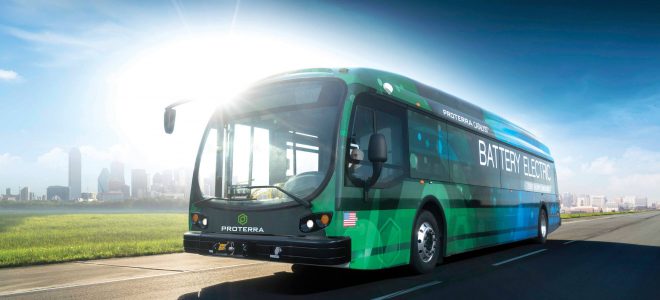California just passed a rule that will phase out diesel and gas-powered public transit buses by 2040.
The powerful California Air Resources Board (CARB). which regulates air quality in the state. issued a unanimous rule that will bar the 200 public transit agencies in the state from purchasing any natural gas or diesel buses beginning in 2029. By 2040. only zero-emissions buses will be allowed.
A growing number of municipalities have already invested in electric buses and are building up their EV fleets. But the CARB rule is the first state-wide electric bus requirement. The move could cut greenhouse gas emissions by 19 million metric tons through 2050. the equivalent of taking four million cars off of the road.
Perhaps more important for the communities in question is the impact on local air pollution – particulate matter and the formation of ground level ozone that has negative effects on human health. “A zero-emission public bus fleet means cleaner air for all of us.“ Mary D. Nichols. the chairwoman of CARB. said in a statement.
While agencies will be barred from purchasing diesel or gas buses beginning in 2029. they will need to achieve incremental goals along the way. By 2023. a quarter of procured buses must be electric. and half by 2026. As a result. the impact on crude oil demand will begin in the near future. There are around 12.000 buses on California’s roads today. with only about 150 of them electric.
There are obvious advantages that municipal fleets have over individuals when going electric. Municipalities (with help from states) can finance acquisitions with more ease. and they can also take the long-view. In other words. they are less deterred by upfront costs if the ultimate payoff makes sense over time. Indeed. even though the upfront cost of electric buses is steep. the payoff is much quicker than it is for electric cars. That is because transit buses run for much of the day. every day.
Moreover. charging stations can be centrally located at depots. servicing a whole fleet of buses. And because routes are predictable and regular. there is much less “range anxiety“ when compared to an individual motorist.
As such. the switch to electric buses could happen much quicker than the transition from the internal combustion engine to electric vehicles on an individual basis.
Bloomberg New Energy Finance raised the profile on electric buses earlier this year with its forecast that electric buses capturing 84 percent of new sales by 2030. That stands in sharp contrast to the 28 percent market share that EVs capture by the same date. according to BNEF. Even that figure has been deemed to be optimistic by some analysts.
BNEF says that as soon as next year. electric buses will have a lower total cost of ownership than conventional buses “in almost all charging configurations.“
China. for now. is leading the way. “China has led this market in spectacular style. accounting for 99% of the world total last year. The rest of the world will follow. and by 2040 we expect 80% of the global municipal bus fleet to be electric.“ Colin McKerracher. lead analyst on advanced transportation for BNEF. said in a statement earlier this year.
CARB estimates that the new rule could save the public agencies $1.5 billion in maintenance. fuel and other costs by 2050.
The big losers of the rule will be natural gas providers. which had contracts with the state to fuel gas-powered buses.
If California is to achieve its goal. one of the principal beneficiaries could be a company like Proterra. a manufacturer of electric buses. Proterra received $155 million in investment a few months ago. led by Daimler. Proterra’s customers are mostly public transit agencies sprinkled around the country. many of which are located in California. However. after CARB’s latest ruling. Proterra is surely set to capitalize on a rush of new purchases.
 Iran Energy News Oil, Gas, Petrochemical and Energy Field Specialized Channel
Iran Energy News Oil, Gas, Petrochemical and Energy Field Specialized Channel




